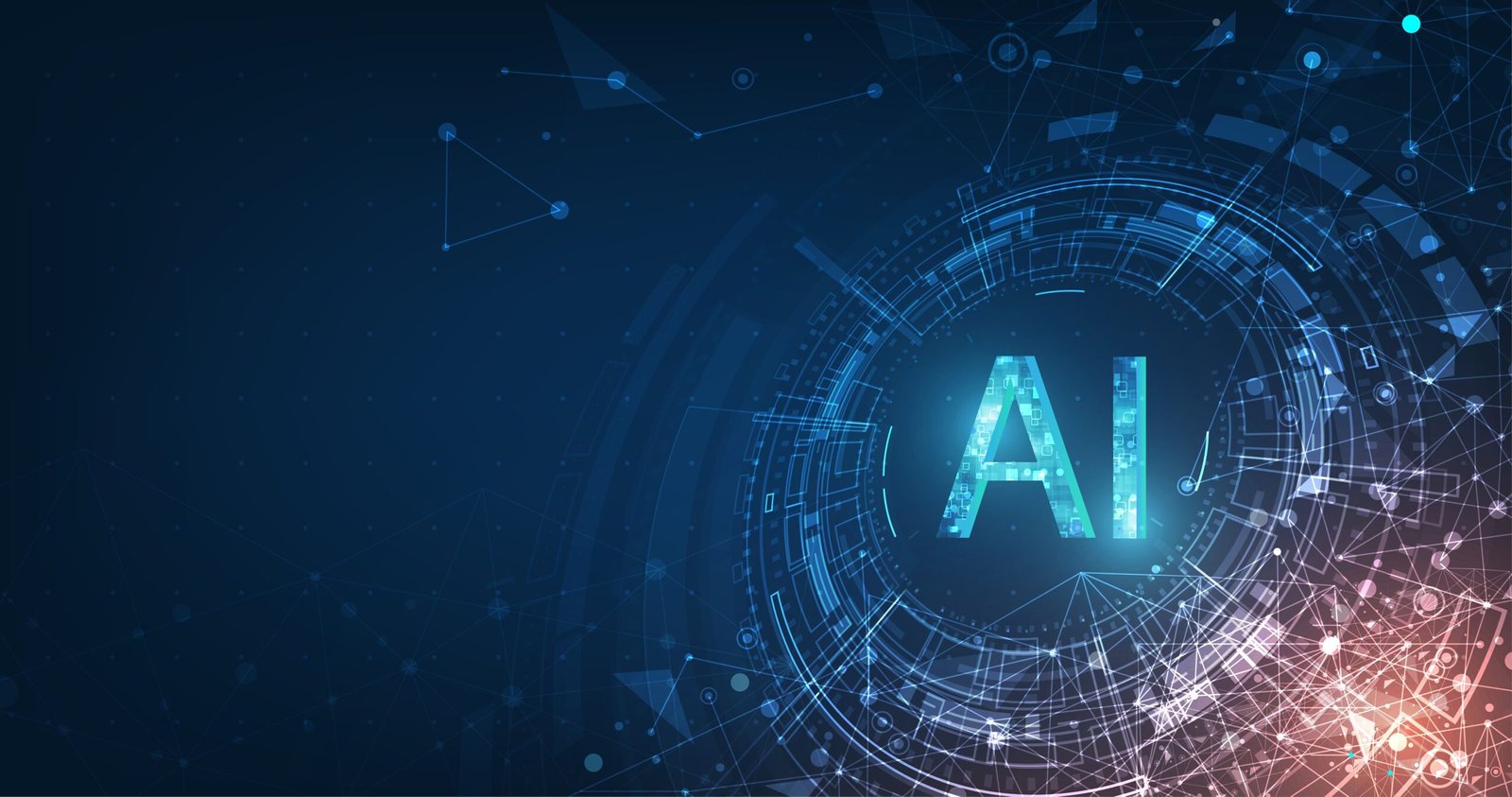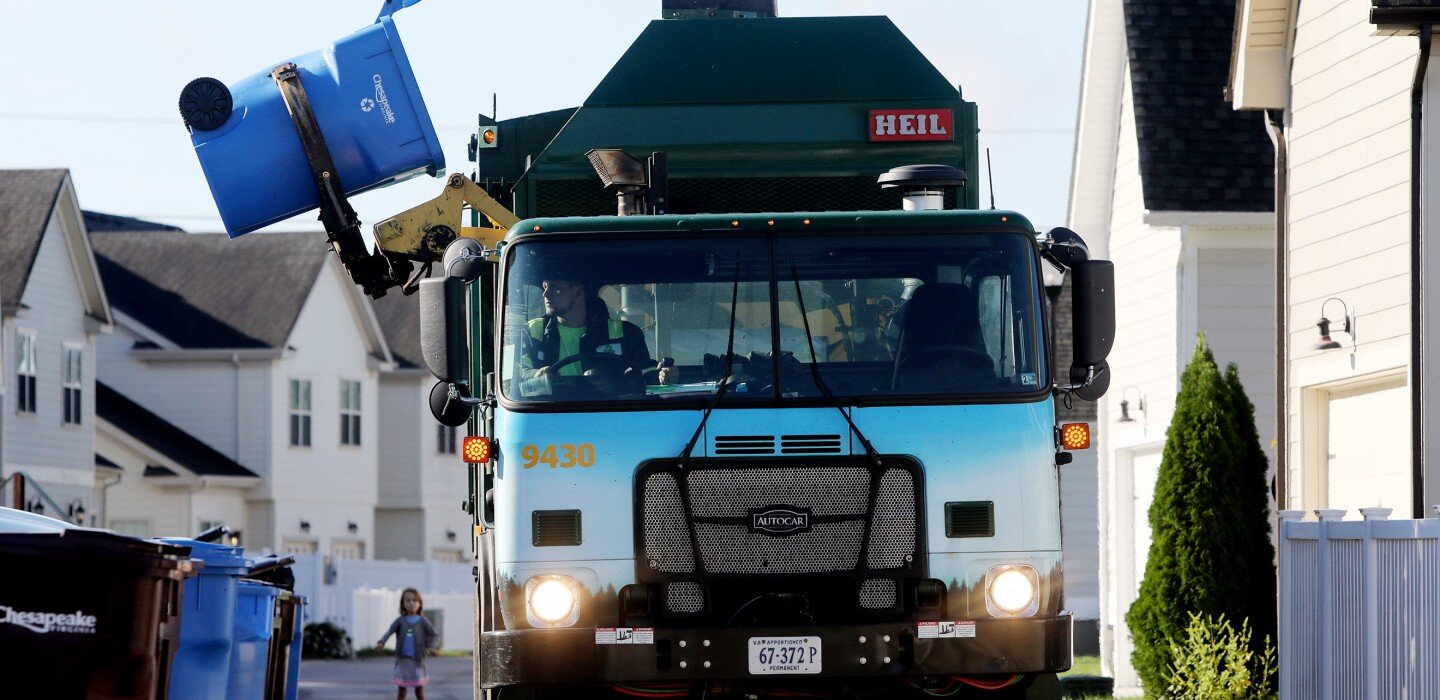AI Research
Coming for Your Job or Improving Your Performance?

Epic’s Electronic Medical Record and Ancillary Systems Release AI Upgrades
Epic Systems announced a host of artificial intelligence (AI) tools last month at its annual conference. With its more than 300 million patient records (in a country with <400 million people) and more than 3500 different hospital customers, Epic has either released or is currently working on more than 200 different AI tools.1
Their vast data stores are being used to create predictive models and train their own AI tools. The scale of Epic and AI and what it can be used for is both exciting and frightening.
Optimizing Tools to Reduce the Burden of Health Care Administration
Typically, Epic Systems and other technology solution providers’ first entry into AI implementation comes in the form of reducing menial tasks and attempting to automate patient-customer interactions. In my discussions with health care administrators, it is not uncommon for them to attribute 40% to 60% of the cost of health care to administrative tasks or supports. For every physician, there are generally at least 3 full-time equivalencies (workforce members) needed to support that physician’s work, from scheduling to rooming patients to billing and a host of other support efforts.
About the Author
Troy Trygstad, PharmD, PhD, MBA, is the executive director of CPESN USA, a clinically integrated network of more than 3500 participating pharmacies. He received his PharmD and MBA degrees from Drake University and a PhD in pharmaceutical outcomes and policy from the University of North Carolina. He has recently served on the board of directors for the Pharmacy Quality Alliance and the American Pharmacists Association Foundation. He also proudly practiced in community pharmacies across the state of North Carolina for 17 years.
Reducing Cost and Improving Patient-Customer Experience
Reducing administration should reduce costs. Early-entry AI tools are generally aimed at reducing administrative cost, while simultaneously improving the patient experience extramural to the care delivery process (the bump in customer experience is the side benefit, not the motivation). In fact, all of us are more likely to be assigned an AI assistant as a customer than to use one as a health care provider at this juncture. AI is currently deployed over multiple sectors and customer service scenarios, interacting with us indirectly in recent years and now more directly as time passes. Remember that Siri and Alexa continue to grow just like humans, and now there are thousands and thousands of these AI bots. There is a strong possibility that if you answer a spam phone call, the “person” on the other end of the line is an AI tool (being?) and not a human.
Will AI Be an Antidote to Health Care Professional Burnout?
Charting is a drag. Ask any medical provider and one of their least favorite tasks is writing patient encounters for documentation’s sake rather than for the sake of patient care. I’ve personally known hundreds of physicians over my 2 decades of collaborating with them and the majority do most of their charting during off hours (thanks to technology), eating into their work-life balance and wellbeing. A recent study of providers using AI tools for charting found a 40% reduction in documentation burden and better and more complete charting.2 Could AI reduce the burden of menial pharmacy tasks that take away from patient care as well? Very likely yes.
But what if the business model doesn’t change? The biggest lie ever told in pharmacy was that technology was going to free pharmacists to provide patient care without a subsequent workflow and economic model to support it. Therefore, our profession went from filling 150 prescriptions a day to 300 a day to, in some cases, up to 500 per day per pharmacist. The only thing the technology did was increase the throughput of the existing business model. It didn’t support a new model at all.
That is the concern of many physicians as well. Will AI merely increase the number of encounters expected of them or will it actually improve their care delivery and practice satisfaction? That’s a question explored in a recent Harvard Business School article that points to upcoding bias (documentation of higher levels of care to bill more revenue), reduction in administrative cost, and reduced clerical full-time equivalents as the seeming “wins” for health systems administrators thus far, rather than better and more cost-efficient care delivery overall.3 Unsurprisingly to pharmacists, the business model is driving AI use, not the desired practice model.
AI as the New “Peripheral Brain” and Decision Support System
Those of us of a certain age remember a time in pharmacy school when we first entered the practice world under the supervision of a preceptor. At that time, the “peripheral brain” was a notebook that contained the latest prescribing guidelines, infectious disease–drug matches, and other clinical information. Then along came a handheld electronic version of it. Then came Google. Then the implementation of cloud computing. And now AI.
AI is already in place for many physicians and other health care providers, and I fear pharmacy may actually be late to the game in an arms race to make the drug assessment–prescribing–filling process even more efficient. But efficient at what? Administrative tasks? Order entry? Prior authorization documentation?
What About the Effects on Health System and Community Pharmacy Practice?
What if the rest of the world views the practice of pharmacy as consisting entirely of administrative tasks and not assessment and care delivery? If the AI tool is the physician’s peripheral brain, why is there a need for the pharmacist to make recommendations or find drug therapy problems? If the AI tool is instructing the care manager on which medications the care team needs to gather information about and report back to the peripheral brain, why have a pharmacist on the team? There will be many who say, “Oh, AI will absolutely replace the need for pharmacists because they don’t (actually) deliver care. They are a means of medication distribution and a great source of knowledge of medications, but AI will be better at that.”
Too Little Discussion and Planning Not Underway in Pharmacy Circles
The AI takeover is not some distant future reality. The reality is weeks and months away, not years and decades. Nvidia (the chipmaker essential for AI processing) has seen its stock price rise more than 900% in the past 3 years as investors awaken to the speed with which AI is moving. AI is already starting to move from helper to replacement for many jobs and we could see AI agents doing research autonomously within 6 to 18 months and becoming the experts in every field of study known to humans by 2030 (or sooner).
What are we doing in the pharmacy world to prepare, take advantage of, and plant our flag as the medication optimization experts that utilize AI better than anyone else? As far as I can tell at this juncture, we’ve given AI a passing glance and are waiting for AI to come to us, rather than aligning and integrating with AI at the outset.
AI Could Be the Best and Worst Thing for Pharmacy. We Must Learn Lessons From the Past.
There is so much work to do, from regulatory discussions with our state boards of pharmacy to scoping the future of practice alongside technology solution providers to teaching the next generation of pharmacists as well as those already in practice about how to use AI to deliver safer, more effective, and more innovative care.
And above all, practice follows the business model. If provider status was important pre-AI, it has become critical post AI. If we are a profession of clerical work, we will be replaced. If we are a profession of providers, we will harness the immense capabilities of our future AI assistants. No more “This will save you time so you can care for patients” baloney, when there is no economic support model for care delivery sizable enough to employ a quarter of a million pharmacists. We should all be demanding to see evidence of the billable time from our employers, policy makers, and regulators. That is the only sustainable path when the peripheral brain is in the cloud and is the known universe’s best version of it.
REFERENCES
1. What health care provisions of the One Big Beautiful Bill Act mean for states. National Academy for State Health Policy. July 8, 2025. Accessed July 21, 2025. https://nashp.org/what-health-care-provisions-of-the-one-big-beautiful-bill-act-mean-for-states/
2. Graham J. The big, beautiful health care squeeze is here: what that means for your coverage. Investor’s Business Daily. July 18, 2025. Accessed July 21, 2025. https://www.investors.com/news/big-beautiful-bill-trump-budget-health-care-coverage/
3. Constantino AK. Bristol Myers Squibb, Pfizer to sell blockbuster blood thinner Eliquis at 40% discount. CNBC. July 17, 2025. Accessed July 21, 2025. https://www.cnbc.com/2025/07/17/bristol-myers-squibb-pfizer-to-sell-eliquis-at-40percent-discount.html
AI Research
The race to power artificial intelligence

WASHINGTON (TNND) — The United States is experiencing a significant increase in electricity demand due to the rapid growth of artificial intelligence technologies. According to an analysis from Berkeley Lab, data centers currently consume about 4.4% of all U.S. electricity, a figure expected to rise sharply as AI models require more power. By 2028, over half of this consumption could be attributed to AI alone, equivalent to powering 22% of all U.S. households.
Most of this electricity is generated from fossil fuels, with data centers operating on grids that emit 48% more carbon than the national average, said a report from MIT Technology Review. While companies like Meta and Microsoft are investing in nuclear power, natural gas remains the primary energy source.
In response to the growing demand, President Donald Trump signed an executive order in April directing the Department of Energy to expedite emergency approvals for power plants to operate at full capacity during peak demand. The order also mandates the development of a uniform methodology to assess reserve margins and identify critical power plants essential for grid reliability.
Despite these measures, concerns remain about the U.S.’s ability to provide the 24/7 power required by AI, especially as China implements plans to ensure reliable electricity for data centers. According to reporting from Forbes, “the U.S. does not have a coherent and continuing energy plan of any type. China’s central planning allows for development and sustainability, while the U.S. approach to energy changes every four years”.
AI Research
House bill targets rising rural utility costs from AI data centers

Surging utility bills linked to artificial intelligence data centers would get a closer look from a trio of federal agencies under a new bipartisan bill in the House.
The Unleashing Low-Cost Rural AI Act from Reps. Jim Costa, D-Calif., and Blake Moore, R-Utah, would require the Energy, Interior and Agriculture departments to examine the effect AI data center buildouts are having on rural America.
“AI Data Centers are expanding rapidly and using more energy and water than entire cities. That energy demand is driving up utility costs for consumers,” Costa said in a press release Thursday. “My legislation ensures we take a hard look at how this growth impacts rural communities that are powering the AI industry, and make sure families aren’t left paying the price.
“But at the same time,” he continued, “it’s important that rural communities are not left behind in the new opportunities that AI data centers will provide for agricultural sciences and an improved ability to compete in this modern era.”
The rapid construction of AI data centers across the country — especially in rural areas — has led to a spike in energy demand that has dramatically driven up utility costs for consumers. The lawmakers’ press release cited a stat from PJM — the world’s largest energy market, spanning 13 states — that said data centers have led to an additional $9.3 billion in costs for ratepayers.
The AI Action Plan released by President Donald Trump in July featured several callouts to the importance of expanded energy capacity through streamlined permitting and fewer environmental regulations. The plan also sought to make federal lands “available for data center construction and the construction of power generation infrastructure for those data centers.”
Moore said in the press release that Utah is “a prime location” for AI infrastructure and data centers, but “cementing” the state’s innovation bona fides “will require identifying rural areas ready for data expansion, streamlining permitting for new energy projects, and promoting the co-location of data centers with energy facilities.”
“These efforts will power our growing digital demands without passing costs on to families,” he added. “I’m grateful to partner with Representative Costa to introduce the Unleashing Low-Cost Rural AI Act to identify other areas of the country, like Utah, that will advance solutions to meet our energy needs.”
Under the bill, the Energy, Interior and Agriculture would team up to study the impact of AI data center expansions in rural parts of the country, in addition to identifying areas that appear to be strong candidates for tech expansion. They would also assess the impact data center expansion might have on consumer costs, as well as energy supply and reliability.
The agencies would also be charged with examining ways current energy infrastructure may be upgraded to allow AI data centers to coexist alongside those power facilities. There will also be reviews of nuclear and geothermal energy, solar, wind and hydro power, battery storage, and carbon capture.
According to a piece published last month in the Tech Policy Press, global energy use by data centers has jumped 12% annually over the past seven years, with projections that it will more than double by 2030.
“As providers of the largest and most compute-intensive AI models keep adding them into more and more aspects of our digital lives with little regard for efficiency (and without giving users much of a choice), they grow increasingly dependent on a growing share of the existing energy and natural resources, leading to rising costs for everyone else,” the authors warned.
AI Research
AI, Robotics Could Sort Trash in South Hampton Roads, Va.

(TNS) — Representatives of the region’s waste disposal authority are making the rounds at city meetings this month to lay the groundwork for long-term contract extensions they say will extend use of the regional landfill through the end of the century.
Southeastern Public Service Authority (SPSA) is asking South Hampton Roads cities and counties to renew their trash contracts for 25 years instead of an upcoming 10-year extension.
The longer-term contracts are needed to ensure that SPSA’s third-party provider will invest $200 million in new facilities to sort recyclables from solid waste across the region, SPSA Board of Directors Chairman Tom Leahy told the Virginia Beach City Council Tuesday.
The new sorting process will eventually eliminate the need for blue curbside recycling cans and for residents to sort recyclables from solid waste.
“All the waste would go into a single can, collected by a single truck at the curbside,” said Leahy. “Recycling and reuse would occur after collection.”
SPSA handles hundreds of thousands of tons of waste for Chesapeake, Norfolk, Portsmouth, Suffolk and Virginia Beach, in addition to surrounding localities including Franklin and Southampton and Isle of Wight counties.
SPSA has been in need of alternative waste disposal services since the 2024 closure of the WIN Waste plant, formerly known as the Wheelabrator facility, which burned 80% of the region’s trash for decades. The former plant also converted waste into steam energy for the Norfolk Naval Shipyard. Then, 30% of the ash left over was diverted to the landfill.
The plant’s closure put pressure on the regional landfill, which will reach capacity in a few decades.
SPSA is in the process of finalizing negotiations with Commonwealth Sortation LLC, a subsidiary of AMP Robotics — a Colorado-based alternative waste disposal provider that uses artificial intelligence and robotics to extract mixed recyclables and organic material from municipal solid waste.
The process will divert 50% of SPSA’s waste from the landfill and extend the landfill’s capacity through 2095, Leahy said.
Commonwealth Sortation plans to invest approximately $200 million in new processing facilities, but wants a guarantee that SPSA’s member communities are in for the long haul. The company is currently operating out of a facility in Portsmouth and plans to expand its operations.
An agreement between SPSA’s board and Commonwealth Sortation is expected by the end of this year, but it’s contingent on most of the localities agreeing to the 25-year extension, Leahy said.
The Virginia Beach City Council is scheduled to vote on the contract extension Oct. 7. Cities’ agreements with SPSA are scheduled to renew for an additional 10 years in 2027. The proposed amendment would extend each localities’ contract to June 30, 2052.
“Recycling’s pretty popular with our citizens, and this will make everybody with a black can be a recycler,” said Vice Mayor Rosemary Wilson. “It’s really good news environmentally for all of us.”
Tipping fee increases associated with the new process are not expected to be higher than what large cities like Virginia Beach that offer curbside recycling are already incurring.
“We won’t necessarily see a cost increase associated with this transaction,” said City Manager Patrick Duhaney.
Several cities recently incurred cost increases when they renewed recycling contracts with TFC Recycling, including Virginia Beach and Norfolk. Chesapeake did away with curbside recycling in 2022 as costs increased.
The average number of homes using curbside recycling in Virginia Beach was 125,000 in 2024. Virginia Beach residents currently pay for curbside recycling as part of their trash collection. The solid waste collection fee is $30.55 per month.
Virginia Beach’s contract with TFC Recycling will overlap with the new SPSA contract and general fund support may be needed to cover the cost, City Manager Patrick Duhaney said.
©2025 The Virginian-Pilot. Visit pilotonline.com. Distributed by Tribune Content Agency, LLC.
-

 Business2 weeks ago
Business2 weeks agoThe Guardian view on Trump and the Fed: independence is no substitute for accountability | Editorial
-
Tools & Platforms1 month ago
Building Trust in Military AI Starts with Opening the Black Box – War on the Rocks
-

 Ethics & Policy2 months ago
Ethics & Policy2 months agoSDAIA Supports Saudi Arabia’s Leadership in Shaping Global AI Ethics, Policy, and Research – وكالة الأنباء السعودية
-

 Events & Conferences4 months ago
Events & Conferences4 months agoJourney to 1000 models: Scaling Instagram’s recommendation system
-

 Jobs & Careers2 months ago
Jobs & Careers2 months agoMumbai-based Perplexity Alternative Has 60k+ Users Without Funding
-

 Podcasts & Talks2 months ago
Podcasts & Talks2 months agoHappy 4th of July! 🎆 Made with Veo 3 in Gemini
-

 Education2 months ago
Education2 months agoMacron says UK and France have duty to tackle illegal migration ‘with humanity, solidarity and firmness’ – UK politics live | Politics
-

 Education2 months ago
Education2 months agoVEX Robotics launches AI-powered classroom robotics system
-

 Funding & Business2 months ago
Funding & Business2 months agoKayak and Expedia race to build AI travel agents that turn social posts into itineraries
-

 Podcasts & Talks2 months ago
Podcasts & Talks2 months agoOpenAI 🤝 @teamganassi



